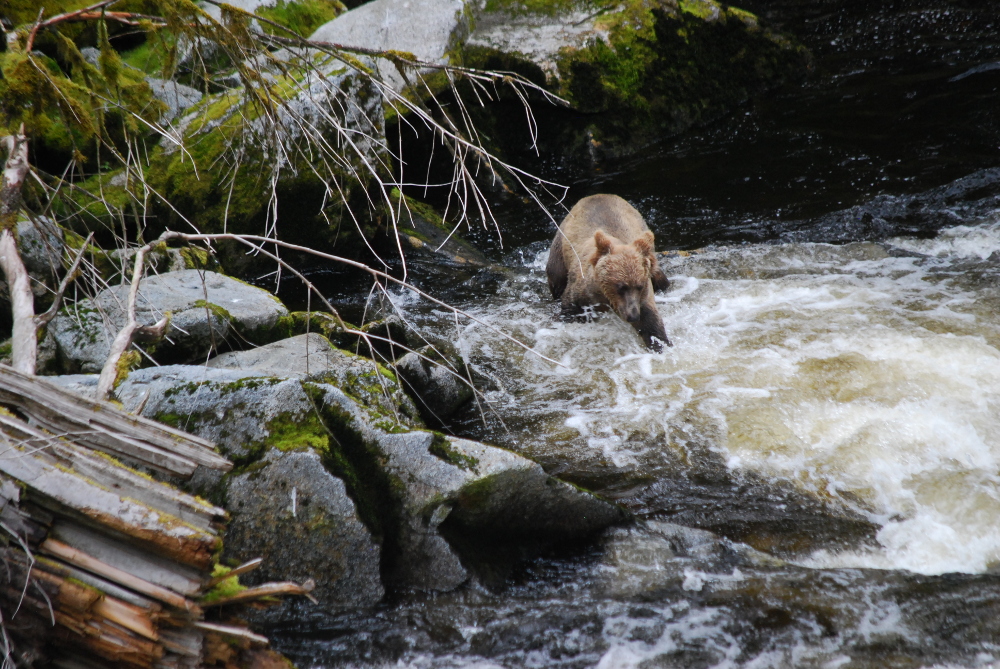The U.S. Forest Service has started up a series of meetings about managing conflicts between hunters, tour operators and other land users in parts of the Tongass National Forest.
The meetings aim to minimize crowding during spring and fall hunting seasons on Admiralty Island, as well as national forest land around Hoonah, Juneau and Sitka. They’re the result of a collaboration between hunting guides and small cruise ship companies and are an offshoot of a 2017 Forest Service decision on land use called the Shoreline Two Outfitter Guide Project.
Perry Edwards is district ranger for the U.S. Forest Service in Sitka, the agency’s lead ranger tasked with implementing that document. It sets limits on numbers of guided hunters and visitors allowed in different parts of the forest.
“The small cruise vessels in the spring time there’s an overlap between that and in the fall with the bear guides,” Edwards explained. “And they both have an interest in seeing bears but their interest is very different. Neither of them really wants to see the other in that area because I don’t think the people on the small cruise vessels are interested in seeing bears getting shot but that is legal. That is a form of hunting and it’s a great monetary benefit to Southeast Alaska of that. And likewise the bear guides aren’t thrilled about a bunch of people showing up when they’re hoping to find a bear for this person who’s come up to here for a world class hunting experience.”
Last winter the federal agency started up discussions between big game hunting guides and tour businesses. In April, the two sides came up with an agreement on best management practices designed to avoid conflict. It attempts to identify times of the spring and fall and parts of the forest that would not see overlap between guided hunters and guided visitors. Hunting guides proposed a set of locations that tour companies could use during these seasons, as long as their clients didn’t stray into other parts of the forest used by hunters during bear season.
Edwards noted the agreement is voluntary and better than if the federal agency had to come up with a compromise for the two commercial uses of the forest.
“The hope was that they would work with each other and figure those areas out,” he said. “And this was only the first year and we know, we knew and we know, that there was going to be some hiccups and there was going to be some folks who would be in the wrong place at the wrong time and that would cause some frustration and some consternation by both parties. And we’re going into this fall now trying to have some more of these meetings because we really didn’t get that going until late in the spring last summer. And so it was a quite a change for the small cruise vessels and then they needed to pass that information onto their naturalists and their people that take people out in the summer and so there was a lot of a learning curve. And we’re hoping to now take that experience to improve things even more and have this whole winter to have these meetings and talk about these different aspects of things.”
The first in the series of meetings on minimizing crowding and conflict was November 8th. There are two planned each month in December, January and February at ranger district offices in Juneau, Hoonah, Petersburg and Sitka. Participants can also tune in by phone or online. The agency’s website for the effort is here while an interactive map for areas and comments is here.
Another series of meetings focuses on the process for changing ownership of permits for guiding brown bear hunts.
(Editor’s note: In the interest of full disclosure, Edwards is also a board member at fellow Coastalaska member station KCAW in Sitka)












